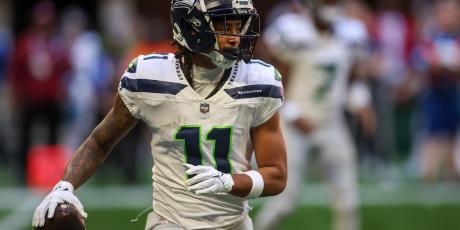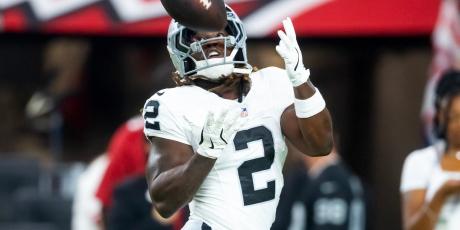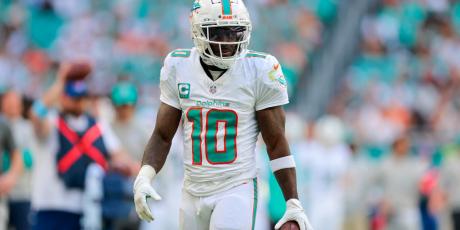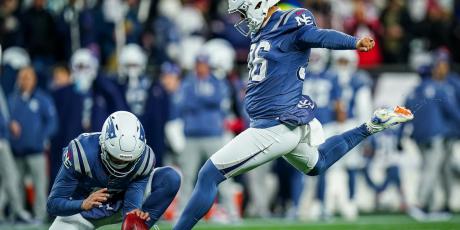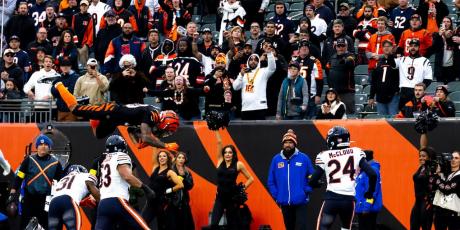How Teddy Bridgewater Impacts Carolina

Teams take on the identity of their quarterback and head coach.
We’ve seen it across the NFL. From ‘Big Truss’ in Baltimore to ‘The Patriot Way’ in New England, a team’s identity grabs our attention. The intersection of talent and attitude that shows up on the field, draws us to watch every week. 'Keep Pounding' had that ability to pull us in for a time. From 2012 to 2015, the Panthers seemed unstoppable during the regular season. Perennially finishing at or near the top of the division, a deep playoff run was always in the discussion. Highlights featuring Steve Smith Sr, DeAngelo Williams, or even Kelvin ‘Redacted’ Benjamin were weekly occurrences. At the center of it all? Cam Newton. His Superman identity, the swagger, even the attitude (good and bad) helped shape the franchise for the better part of a decade. Until now.
It’s Teddy time. On March 17th, the Panthers signed Teddy Bridgewater, bringing an end to the Superman Era in Charlotte. New owner, new head coach, new staff and new starting quarterback. From top to bottom, the Panthers have restructured themselves to regain the competitiveness they once had in the previous decade. I walk through the impact of Teddy Bridgewater's signing and accounting for the likely changes to the Panther’s offense in 2020.
It's Teddy Time
It’s important to get an understanding of what Bridgewater can do as a quarterback before talking about what he may be expected to do under Matt Rhule. Luckily, Drew Brees’ thumb injury let us see what the former first-round draft pick was capable of last season. Bridgewater played the majority of Week 2 in relief of Brees and started five games thereafter. He attempted 195 passes in that span for 1,205 yards, nine touchdowns, and two interceptions. His 5-0 record as a starter all added to the perception he could continue to lead a franchise, but, as always, we need to look deeper into what limitations he may have as a passer. I broke out his games a few different ways for a better look at his performances. Let’s start at the highest level.
| Week | Attempts | Yards | Pass % | TDs | QB Rank | Opponent Pass D Rank | F Points |
|---|---|---|---|---|---|---|---|
| 2 | 26 | 150 | 68.4% | 0 | 30 | 11 | 7.1 |
| 3 | 27 | 177 | 58.7% | 2 | 18 | 15 | 16.3 |
| 4 | 30 | 193 | 58.8% | 0 | 26 | 15 | 6.5 |
| 5 | 34 | 314 | 59.6% | 4 | 4 | 29 | 27.3 |
| 6 | 36 | 240 | 65.5% | 1 | 17 | 16 | 13.6 |
| 7 | 38 | 281 | 56.7% | 2 | 13 | 8 | 19.9 |
Bridgewater averaged 16.7 fantasy points per game over his five starts. He had two QB2 finishes and one QB1 finish in that same span. Not bad for a guy whose last meaningful starts were in 2015 for a different team. Fantasy managers who live the streaming life, were happy with the results. But to get a glimpse into Teddy’s skills, we had to ask slightly different questions:
- Did the offense fundamentally change once Teddy took over?
- Was he asked to do anything different as a starter?
- What could/couldn’t he accomplish as a passer?
The answers to these would give us insight into Sean Payton’s evaluation of Bridgewater, how the offense shifted to fit his style (if at all), and what skills and limitations he has as a professional quarterback. All of which are aspects we can attempt to translate to what he’ll be doing with the Panthers at the start of the 2020 season. To answer the first question, let’s look at what New Orleans did in neutral game scripts.
I went into a more in-depth discussion about passing in neutral situations back in February. The key takeaway: teams that tend to pass more in neutral situations will continue to do so in the red zone. Aggressive behavior between the 20's doesn’t switch to conservative play-calling once in scoring position. For fantasy scoring, that’s critical if you picked up Bridgewater or had any New Orleans’ pass-catcher on your squad. Neutral passing also lets us take peek into the mind of the team’s game plan and evaluation of their personnel. Where do they see their team’s strengths? In their aerial attack or on the ground, with defensive backup? I broke down New Orleans’ pass rate for each week Teddy was under center.
| Week | Neutral | Negative |
|---|---|---|
| 2 | 55.00% | 83.30% |
| 3 | 72.20% | 100.00% |
| 4 | 58.80% | 0.00% |
| 5 | 63.60% | 100.00% |
| 6 | 65.50% | 0.00% |
| 7 | 69.40% | 100.00% |
Note: Average point differential for all of Bridgewater’s starts was 6.6.
Teddy Bridgewater was in the top half of the league for passing volume in three of his five starts. But that wasn’t solely because of how the games unfolded. His average pass rate in neutral game scripts across his five starts was 65.9%. Drew Brees for the entire 2019 season averaged a 62.3% pass rate in neutral situations. Good! It gives some indication that the offense didn’t fundamentally change once Teddy took over. If true, this behavior should also be true in the red zone.
| Week | Between 20's | Red Zone |
|---|---|---|
| 2 | 100.00% | 66.70% |
| 3 | 68.80% | 0.00% |
| 4 | 51.20% | 83.30% |
| 5 | 60.60% | 57.10% |
| 6 | 63.60% | 75.00% |
| 7 | 71.00% | 80.00% |
More good news! Teddy averaged a 59.1% red-zone passing rate in neutral situations which isn’t a significant dropoff from his overall neutral passing rate of 65.9%. In addition, that nearly falls right on top of Brees’ full-season average of 59.2%. Again, this is a quarterback that hadn’t had a meaningful start in three years but had the confidence from Sean Payton to be used as a future Hall of Fame quarterback. Canton hasn't set aside space for Teddy’s bust yet, but the idea that the team didn’t have to change to fit him is encouraging. But what were his strengths and weaknesses?
Strengths
Bridgewater worked well within the structure of the Saints’ offense. With over 62% of his passes being five air yards or fewer, we expect him to excel in this area. Other than passing to his right, ‘Two Gloves’ was at or above league average for all throws five air yards or fewer. He never outdid Drew Brees, but five starts is a short time to overcome a 14-year career with the same head coach. Regardless, a quick, up-tempo offense with multiple pass-catching options helped bring Teddy back into the starting quarterback conversation. We can easily see similar concepts being executed by the Panthers.
Switch Alvin Kamara with Christian McCaffrey, and Michael Thomas with D.J. Moore, and you’d likely get the same result. But the first reads and dump-off passes only work for so long. A consistent knock on Teddy is his inability to hit deep passes. He’s not an aggressive quarterback. Only 12.2% of his passes traveled 15 air yards or more. However, he’s still capable of making a deep throw into a tight window.
Adjusts the protection. Steps up into the pocket to avoid pressure. Threads the pass past the free safety directly to the receiver just as the deep safety makes the tackle. Drew Brees only attempted a deep pass on 15.9% of his throws. Their offense isn’t predicated on those passes. It doesn’t need to be. With time in the pocket, Bridgewater consistently demonstrated he could pilot a fantasy-friendly offense. It’s when the protection breaks down where he struggles.
Weaknesses
Bridgewater's inability to create out of structure plagued him throughout 2019. New Orleans’ red zone efficiency dropped from 35.3% under Brees to 22.7% over Teddy’s stint as a starter. For context, Baltimore’s red-zone efficiency was 30.6% for the entire season at 31.9 points per game. While he may be able to see and even feel pressure, his reactions to it (not resetting his feet before making a pass, opting for a risky throw versus a safer option or throwing the ball away) are his biggest flaw.
With his strengths and weaknesses laid out, let’s look at how he impacts both his current and former team.
How Bridgewater Impacts Carolina
An injured Cam Newton. A second-year backup quarterback turned starter Kyle Allen A third-round rookie Will Grier. For starters, Teddy brings health and some successful experience to the position. But it goes a bit deeper than just his time elsewhere.
| Player | Yards Per Drive |
|---|---|
| Teddy Bridgewater | 34.3 |
| Kyle Allen | 29.7 |
| Will Grier | 25.5 |
Bridgewater’s presence under center boosted the entire offense. Their 34.3 yards per drive over Teddy’s five starts nearly match their season average of 34.5. On his own, Teddy’s average would have ranked 10th in the league just ahead of San Francisco (33.6). He didn’t take risks and minimized turnovers without putting the team’s fortunes in jeopardy. Panthers’ fans likely still remember the short drives caused by the quality of their starting quarterback.
Kyle Allen was responsible for 22 total turnovers (15 INTs, 7 lost fumbles) in 12 starts. He had multiple turnovers in three straight games. Fantasy managers remember his three QB1 finishes, but Carolina will always remember his four interceptions in Week 8. His weekly sacks behind a makeshift offensive line were disastrous. Grier didn’t fare any better. His first NFL start resulted in three interceptions and five sacks. Keeping the Panthers’ 29th-ranked pass blocking unit in mind, there are mechanical issues that separate Teddy from the rest.
Teddy was at least able to navigate the pocket prior to taking a sack. After 10 starts and taking 39 sacks by Week 14, Kyle Allen still couldn’t manage to step up in the pocket to avoid the blindside hit. After taking seven sacks the week prior! While they are expected to boost their line throughout the remainder of the offseason, Teddy brings a greater understanding of defensive coverages and sensing pressure than his predecessors.
What Bridgewater Leaves Behind In New Orleans
New Orleans’ 2020 starting offensive roster:
Brees has two working thumbs. Kamara is healthy. They’ve added Emmanuel Sanders to boost their receiving corps behind Thomas. Jared Cook returns at age 33 after finishing as the TE7. Early 2020 ADP aligns with the market’s expectations from the previous year:
| Player | 2018 Rank | 2019 Rank |
|---|---|---|
| Drew Brees | QB6 | QB9 |
| Alvin Kamara | RB3 | RB5 |
| Michael Thomas | WR3 | WR1 |
| Jared Cook | TE7 | TE10 |
New Orleans sees their window and the team is stepping on the gas pedal. Their fantasy values are (and should be) near their 2019 prices with continued optimism as the 2020 season approaches.
The Bottom Line
Teddy has shown he still has the tools to be a franchise quarterback. The Panthers have laid out a financial plan in line with his anticipated development. His 3-year, $63M contract would place him as the 10th-highest-paid quarterback in the final year of his deal at just 30-years old. They also have an offensive plan already in motion.
Deep passing was a staple of the LSU offense under Joe Brady in 2019. Joe Burrow’s big plays to Justin Jefferson and Ja’Marr Chase were on display in the NCAA Championship game. The Brady-Burrow offensive playstyle equating to 10.8 Yards Per Attempt has no similarity to what we’ve already highlighted as Bridgewater’s strengths. At least, on paper, they don’t.
— NFL Draft Videos (@NFLDraftVideos) January 9, 2020
RPO’s and inside zone concepts were essential to Matt Rhule’s offense at Baylor. They’re eerily similar to what Teddy was asked to execute this past season. Baylor’s offense was also known for its aggression, tendencies to attempt fourth-down conversions, and primarily running out of shotgun from 10- or 11-personnel. Fundamentally and schematically, Rhule and Brady’s approach to offensive planning falls in line with what Bridgewater does best.
Joe Brady tailored LSU’s offense to fit their strengths. To fit their quarterback’s strengths. Prior to that, Brady spent time on the Saints’ staff as an offensive assistant while Bridgewater was a backup. The past connection and understanding put the team on an early path to success. There’s no question Teddy will learn to work with their primary weapons in D.J. Moore and Christian McCaffrey. The real question lies in involving their ancillary superstars to maximize their offense.
Robby Anderson and Curtis Samuel have the same calling card. Their elite speed has them pegged as deep-ball threats. Anderson had an aDOT of 14.6 while Samuel’s was 15.3. Samuel had the most unrealized air yards of any receiver in 2019 by amassing 1608 air yards but only having 627 receiving yards. We saw each misfire and off-target deep ball and assume Teddy’s inclination to shorter passes will render them useless for fantasy. I see, and I think Matt Rhule sees, something different. Playmakers.
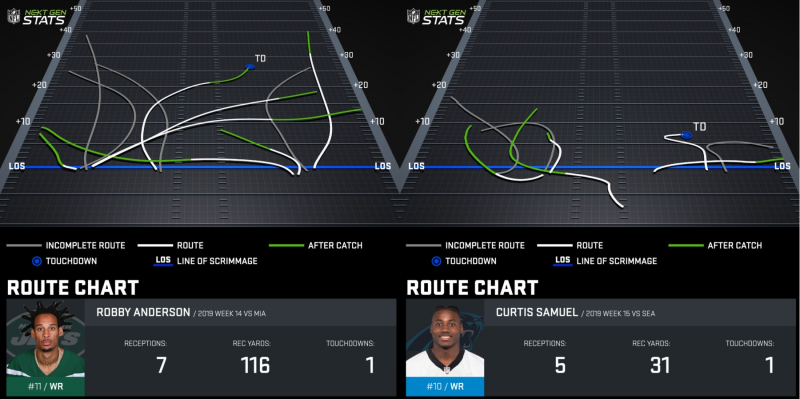
Samuel is a converted running back. Anderson spent his first season at Temple under Rhule on offense and special teams as a kick returner. Their long speed and dynamic ability make them threats on the field at all times. New York and Carolina see that, too. Their usage in the short-passing game and out of the backfield indicates they can be more than a deep threat. Matt Rhule understands how to elevate playmakers. Joe Brady knows how to tailor an offense to his players. It all intersects at Teddy.
Teddy’s career will always be shrouded in mystery. What if he had stayed in Minnesota to play with Adam Thielen, Stefon Diggs, and Dalvin Cook? What if he had been given the chance to take over after Drew Brees? While we won’t see either come to fruition, Teddy lands in an equally fertile situation. Creative and aggressive leadership. Talented pass-catchers at multiple positions. A scheme that fits his style. The Panthers’ defense has lost key defensive starters creating a perfect storm for fantasy production. Kyle Allen attempted 58.7% of his passes while in a negative game script. His turnovers likely played a role in these scripts, but the Panthers finished 2019 allowing the 2nd-most points per game (29.4). He’s valued at QB27 according to the latest best-ball ADP which correlates with John Paulsen’s early-season ranking of QB25. However, with the volume, he’ll likely be forced into to keep up with Drew Brees, Tom Brady, and Matt Ryan, he should be on our radar for streaming consideration once the 2020 season begins.

